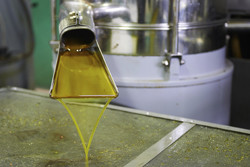Putting olive waste to good use
Olive mills produce huge volumes of liquid and solid waste that are acidic, high in salt, and contain pesticides and organic pollutants such as polyphenols. Currently, disposal of OMW is very expensive and environmentally unfriendly. The EU-funded BIOGAS2PEM-FC (Biogas reforming and valorisation through PEM fuel cells) project aimed to address this by developing an integrated waste valorisation system. The proposed solution is anaerobic digestion of OMW, followed by reclamation of hydrogen gas for use in a proton exchange membrane fuel cell (PEMFC). Project members first studied the composition of OMW streams, and chose promising pre-treatment techniques for anaerobic digestion. Inoculum from a vineyard waste anaerobic digester was chosen because it showed the best methane production, and pig manure was selected as a co-substrate. Researchers tested commercial catalysts for biogas clean-up, and optimised the process for improved hydrogen production by studying different catalysts for the reforming process. The various components for the PEMFC have been tested and optimised. Finally, researchers constructed and tested a prototype system at an olive mill in Spain. Using this prototype, BIOGAS2PEM-FC completed a techno-economic and environmental analysis of the overall system, in preparation for a commercial offering. The final system will provide on-site waste management and power generation for thousands of olive mills across Europe.
Keywords
Olive waste, olive mill, olive mill waste, biogas, waste valorisation, PEMFC, anaerobic digestion



